
Marble Madness is an arcade video game designed by Mark Cerny and published by Atari Games in 1984. It is a platform game in which the player must guide a marble through six courses, populated with obstacles and enemies, within a time limit. The player controls the marble by using a trackball. Marble Madness is known for using innovative game technologies: it was Atari's first to use the Atari System 1 hardware, the first to be programmed in the C programming language, and one of the first to use true stereo sound.
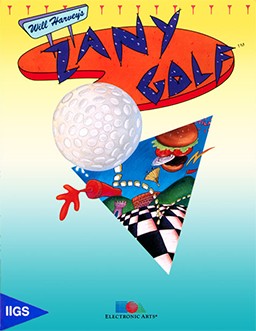
Zany Golf, also known as Will Harvey's Zany Golf, is a fantasy take on miniature golf developed by Sandcastle Productions and published by Electronic Arts in 1988. The game was originally written for the Apple IIGS and subsequently ported to the Amiga, Atari ST, and MS-DOS compatible operating systems. In 1990, a port was released for the Sega Genesis. The game was developed by Will Harvey, Ian Gooding, Jim Nitchals, and Douglas Fulton. Harvey was pursuing his advanced degrees at Stanford University at the time.
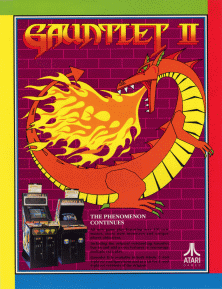
Gauntlet II is a 1986 arcade game produced by Atari Games that serves as the immediate sequel to the original Gauntlet, which was released the previous year. Like its predecessor, Gauntlet II is a fantasy-themed top down dungeon crawler game and was released as a dedicated cabinet, as well as a conversion kit, both available in 2-player and 4-player versions.

Mercenary is a 3D action-adventure game written for the Atari 8-bit computers and published by Novagen Software in 1985. It was converted to the Commodore 64, ZX Spectrum, Amstrad CPC, Atari ST, Amiga, and Commodore 16/116/Plus/4. The game uses vector graphics renderings of vast, sparse environments and has various methods of completing the game. It was also released as Mercenary: Escape from Targ and Mercenary: A Flight Simulator Adventure.

Dalek Attack is a 1992 computer game based on the long-running British science fiction television series Doctor Who, in which the player controls the Doctor and fights recurring adversaries, the Daleks and other enemies. In most versions of the game, the player can choose between playing as the Fourth, Fifth or Seventh Doctor; in the MS-DOS and Amiga versions, the player can play as the Second, Fourth or Seventh Doctor, and in the ZX Spectrum version only the Seventh Doctor was available. A second player may play as the Doctor's companion. K-9 also makes appearances later in the game as does Davros, creator of the Daleks in the TV series, as the final end of level boss. The game is set in London, Paris, New York, Tokyo and Skaro.

Shoot-'Em-Up Construction Kit is a game creation system for the Commodore 64, Amiga and Atari ST created by Sensible Software and published by Outlaw in 1987. It allows the user to make simple shoot 'em ups by drawing sprites and backgrounds and editing attack patterns. The advertising promoted the Kit with the phrase "By the programmers of Wizball and Parallax".

Army Moves is a scrolling shooter game developed by Dinamic Software for the Amiga, Amstrad CPC, Atari ST, Commodore 64, MSX and ZX Spectrum. It is the first chapter of the Moves Trilogy and was followed by Navy Moves in 1987 and Arctic Moves in 1995. It was first released in 1986 and published by Dinamic in Spain and by Imagine Software. Dinamic Software also developed a MS-DOS version of the game, published in 1989 in Spain.

Garfield: Big Fat Hairy Deal is a 1987 computer game for the Atari ST, ZX Spectrum, Commodore 64, Amstrad CPC and the Amiga based on the comic strip Garfield. It is the second video game based on Jim Davis' Garfield comics to be released, following 1986's Create with Garfield.

Fiendish Freddy's Big Top o' Fun is a video game developed by Gray Matter under developer Chris Gray and published in 1990 by Mindscape. It originally appeared on the 16-bit Atari ST, IBM PC and Commodore Amiga, before later being converted to the ZX Spectrum, Commodore 64, Amstrad CPC. The Commodore 64 version was included on cartridge bundled with the Commodore 64 Games System.
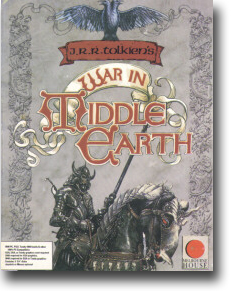
War in Middle Earth is a real-time strategy game released for the ZX Spectrum, MSX, Commodore 64, Amstrad CPC, MS-DOS, Amiga, Apple IIGS, and Atari ST in 1988 by Virgin Mastertronic on the Melbourne House label.

Cybernoid: The Fighting Machine is a shoot 'em up developed and published in 1988 by Hewson Consultants for the ZX Spectrum. It was ported to the Amstrad CPC, Atari ST, Commodore 64, Amiga, and Nintendo Entertainment System. It was programmed by Raffaele Cecco. The ZX Spectrum, Amstrad, and Atari ST versions have a main theme by Dave Rogers, while the Commodore C64 version has a different theme by Jeroen Tel.
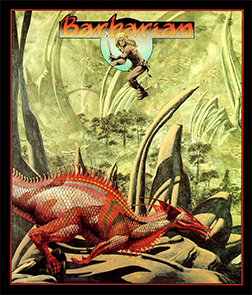
Barbarian is a 1987 platform game by Psygnosis. It was first developed for the Atari ST, and was ported to the Amiga, Commodore 64, MS-DOS, MSX, Amstrad CPC, and ZX Spectrum. The Amiga port was released in 1987; the others were released in 1988. The cover artwork is by fantasy artist Roger Dean.

Mines of Titan is a single-player role-playing video game, developed by Westwood Associates, and published by Infocom in 1989 for Apple II, Commodore 64, and MS-DOS.

5th Gear is a computer game for the Amiga, Atari ST and Commodore 64, released on the Rack-It budget label. The original Commodore 64 version was programmed by Jeroen Leijten, with music by Theo and Renier Hongens. It was largely inspired by previous arcade games Steer and Go and Spy Hunter.
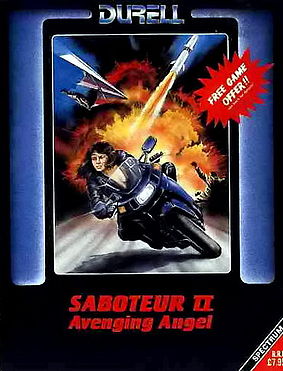
Saboteur II: Avenging Angel, also known as Saboteur 2, is an action-adventure game created by Clive Townsend and released by Durell Software in 1987 for the ZX Spectrum, Amstrad CPC, Commodore 64, and MS-DOS compatible operating systems. A sequel to 1985's Saboteur, the player controls a sister of Ninja from the first game on a mission to avenge his death. Saboteur II was one of the first action-adventure games with a female protagonist and was well received by critics.
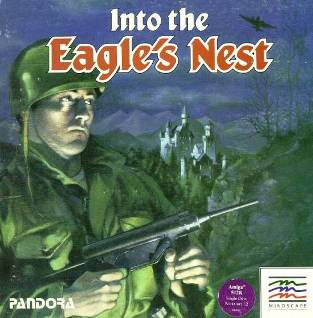
Into the Eagle's Nest is a video game developed by Pandora and published in 1987 for Amiga, Amstrad CPC, Apple II, Atari ST, Commodore 64, IBM PC compatibles, and ZX Spectrum. Atari Corporation also released a cartridge version for the Atari 8-bit computers the following year on the Atari XEGS.

Last Ninja 2: Back with a Vengeance is an action-adventure video game developed and published by System 3 for the Commodore 64, ZX Spectrum and Amstrad CPC in 1988 as a sequel to the 1987 game The Last Ninja. The Acorn Electron, BBC Micro, 1990: Amiga, Atari ST, MS-DOS and NES ports followed in 1989. The NES version of the game was named simply The Last Ninja. In 1990, the Last Ninja Remix edition of the game was re-released for 8-bit systems.
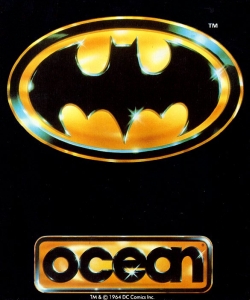
Batman is an action video game developed and published by Ocean Software based on the 1989 film of the same name. It was released on 11 September 1989 for the Commodore 64 and ZX Spectrum with Amiga, Amstrad CPC, Atari ST, MS-DOS and MSX versions following soon after.

Ghostbusters II is a 1989 action game based on the film of the same name. It was published by Activision for various computer platforms. British studio Foursfield developed a version for Commodore 64, Amiga, Atari ST, Amstrad CPC and ZX Spectrum, which also got ported to the MSX by New Frontier. It features three levels based on scenes from the film. Dynamix developed a separate version for the DOS, also based on the film. The non-DOS versions were praised for the graphics and audio, but criticized for long loading times, disk swapping, and the final level. The DOS, Commodore 64 and Amiga versions were the only versions released in North America.

Judge Dredd is a 1991 platform shoot 'em up video game based on the character of the same name. It was developed by Random Access and published by Virgin Mastertronic. It was released in Europe in 1991, for the Amiga, Atari ST, Commodore 64, and ZX Spectrum. Critics found the gameplay repetitive.




















